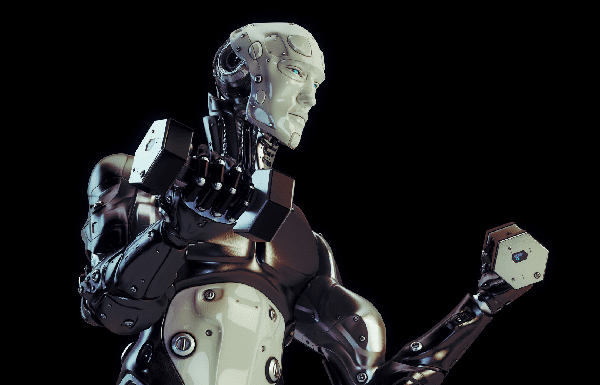
Robots are already plenty physically intimidating. Their metal frames are naturally more powerful and resilient than our fleshy bodies, and the idea of a robot many times more powerful than a human is a trope in both science fiction and science fact. So why, exactly, would any researchers want to have their robots start working out?
A trio of roboticists at the University of Tokyo are building humanoid robots to invert the usual approach to how we think about robots: The robots are being developed to exercise just like humans do — push-ups, crunches, neck stretches, chin-ups, calf stretching, and more — in order to reveal the secrets of how our human bodies work, from stretching to flexing to sweating. It’s unclear if humanoid robots replace personal trainers one day, but it’s not outside the realm of possibility.
The work of those roboticists was published Wednesday in the peer-reviewed journal Science Robotics.
“Our intent is to design a humanoid based on human systems— including the musculoskeletal structure, sensory nervous system, and methods of information processing in the brain—to support science-oriented goals, such as gaining a deeper understanding of the internal mechanisms of humans,” they write in their paper, contrasting with usual robot applications like helping people in their daily life or providing aid during disasters.
One big difference from the typical humanoid robot is it tries to mimic the flexibility of the human body, including a multi-jointed spine and muscles built of motors, wires, sensors, and other parts.
Kengoro, the newer of the two robots, is a particularly good replica of a human: It can “sweat” as a way to release excess motor heat, and it has five digits on each hand and foot so that it interacts with the environment just like we do. It’s also capable of matching humans when it comes to skills we take for granted but would flummox many robots, like balance.
The researchers describe in their paper the potential for these robots beyond showing us more about our own biology. The possibilities in medicine are especially exciting. In some ways it can be viewed as a business opportunity.
“One research group has suggested the possibility that a musculoskeletal humanoid can be used in medicine, such as to grow tissue grafts,” they write. “If a humanoid can replicate human movements, then the resulting muscle contribution analysis or sensory data obtained during motion will benefit athletes or sports trainers. In addition, human-shaped robotic limbs are also expected to be used in other fields, such as for artificial limbs or teleoperated human agents.”
The researchers also say these robots could be useful as crash-test dummies, as they could provide a more human-like response to collisions than standard dummies. And, if nothing else, they have one obvious application: They could be extremely good, if unnerving, workout instructors.